The Lien Foundation and design firm COLOURS have launched a book with 10 intriguing ideas to transform under-used spaces in Singapore into thriving communities for seniors.
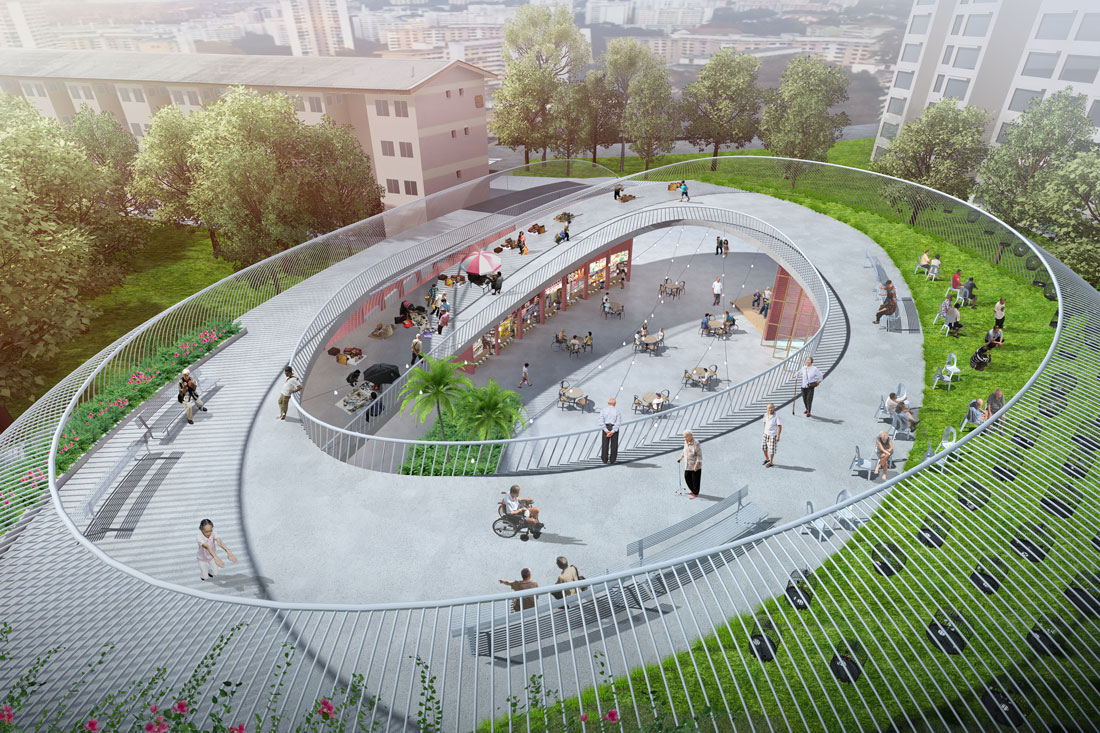
Wholesome Market. Proposed site: Jurong West St 41 Market.
March 2nd, 2018
Singapore’s population of seniors is projected to double by 2030. For a long time, ageing has been considered either as a private family matter, or a national statistical issue. “But there was a blank space at the precinct level,” says Dr Chong Keng Hua, founder of local design consultancy COLOURS: Collectively Ours. There is also a need to rethink the way we approach the ageing community. Says Dr Chong, “The baby boomer generation is different than the pioneer generation. And in our future ageing community, they are part of the solution, not the problem.”
“You know the famous 5Cs of Singapore’s aspirational life – cash, car, credit card, condo, country club? We’ve redefined the 5Cs for senior living as continuity, compensation, connection, contribution and challenge,” says Dr Chong, adding that there is not enough initiative for seniors to achieve the last three Cs.
Commissioned by the Lien Foundation, COLOURS (helmed by Chong and landscape architect Kang Fong Ing) has come up with ten new typologies of spaces to enable seniors to pursue passions, initiate interest-based activities, exercise and (if required) be cared for within the community. These typologies were developed using a set of principles called the 4Ds: de-institutionalise (bring healthcare services down to the community level), de-localise (break away from a geographic-bound system and move toward interest-based social spaces), differentiate (create differentiated care for diverse segments of the senior population) and develop (focus on development and growth).
The ten typologies treat Singapore’s space crunch as an opportunity to spark innovation and to do more with less, rather than as an excuse to maintain the status quo.
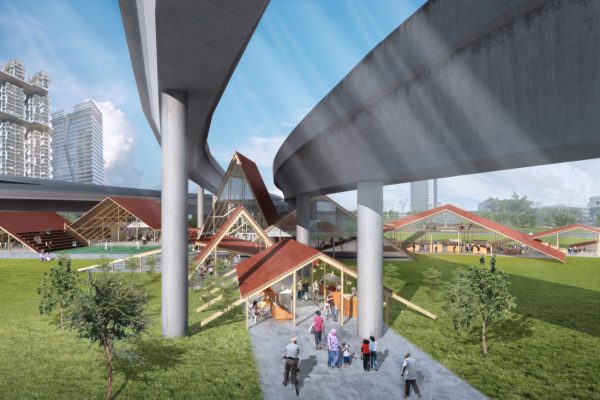
Viaduct Village. Proposed site: below Jurong East MRT Viaduct.
An interchange to empower seniors to serve the community.
Beside high-traffic MRT stations, seniors could run a cafe, hair salon, tuition classes for children, or even care centres for older folk or those with special needs. The Viaduct Village highlights the ‘growing’ part of ‘growing older’ as well as ‘productive ageing’.
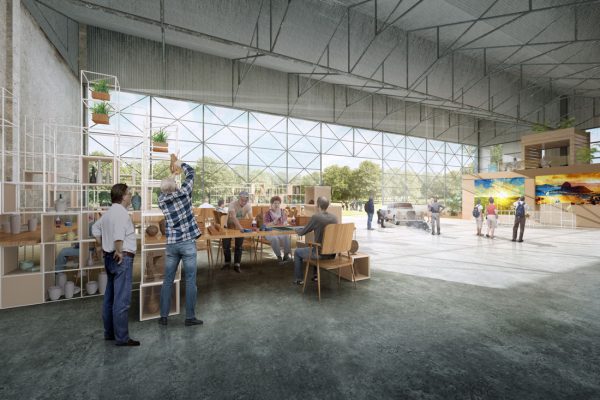
Hobby Factory. Proposed site: Hangar at Kallang Airport (former Singapore Civil Aerodrome).
Co-working space for seniors to pursue their dreams.
Modular interior components for large spaces such as warehouses could support seniors in a work space where they can pursue their interests and enjoy hobbies with like-minded peers. Perhaps hobbies could evolve into creative business start ups.
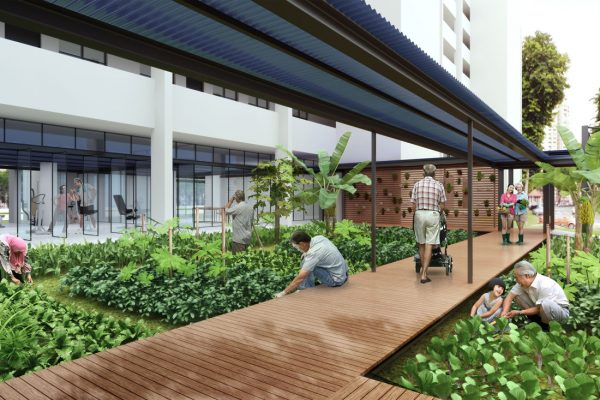
Community Pocket. Proposed site: HDB void deck at Chong Boon, Ang Mo Kio.
A launch pad to connect residents and create resources to support ageing in community.
A hangout space in a HDB void deck where residents can initiate interest-based activities, exercise, attend health checks and pick up skills. A ribbon spaces extending from indoors to outdoors, accessible to all seniors in the precinct. Currently the project is in final stage of development with TOUCH Community Services, slated to open later this year.
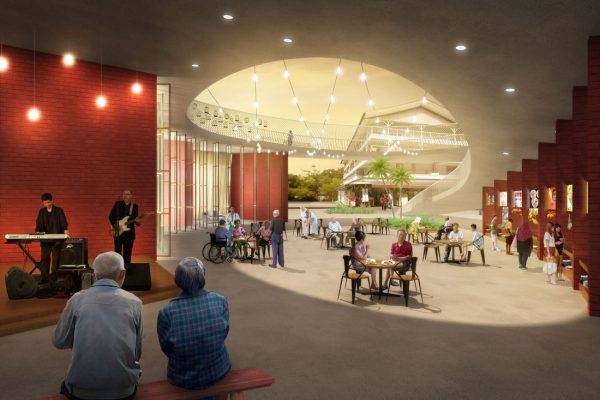
Wholesome Market. Proposed site: Jurong West St 41 Market.
Weaving geriatric care into seniors’ daily routines.
The co-location of places that offer geriatric care and healthy comfort food in the neighbourhood has the potential to allay anxiety and cut down travelling time. A curved ramp leads to the rooftop to promote ‘stealth exercise’.
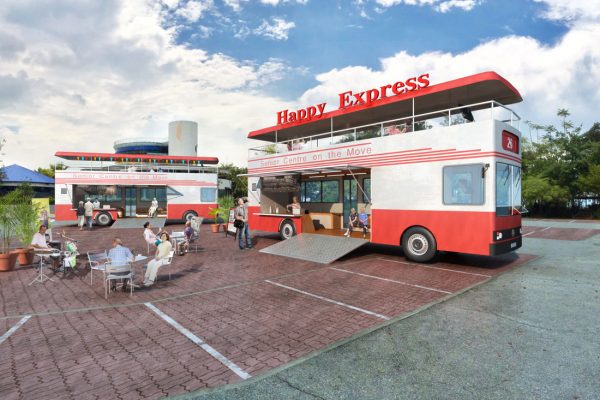
Happy Express. Proposed site: Big Splash car park, East Coast Park.
Senior centre on the move.
A decommissioned bus that provides a mobile alternative to standard eldercare facilities (which are static and fixed). It can connect favourite haunts and places of interest with familiar landmarks and predictable routes, and could allow seniors to re-establish independence and mobility.
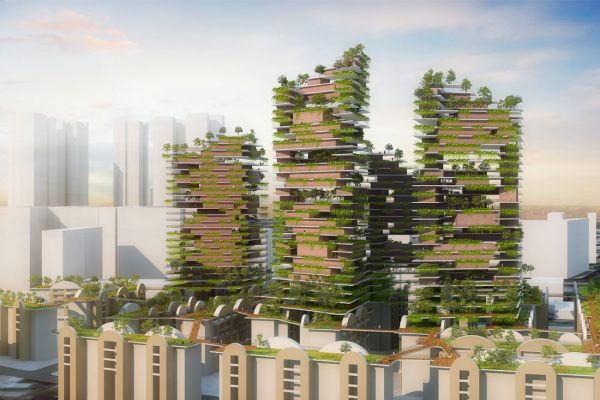
Heartland Kaki. Proposed site: Redhill Close.
Lifelong community in existing housing estates.
Aims to achieve a lifelong community by keeping existing housing blocks and their social fabric intact while continuing to redevelop the precinct and increase its population density. Layers are added above existing housing blocks and a new landscape deck between the two creates a second ground level.

Giving Campus. Proposed site: Former Changkat Changi Primary School (Opposite SUTD).
Going back to school to learn, play and live with youths.
Transforms an old school building opposite a university into an inter-generational hostel and learning centre. By living and learning together, seniors and secondary/tertiary students are encouraged to form reciprocal relationships in which they can care for one another.
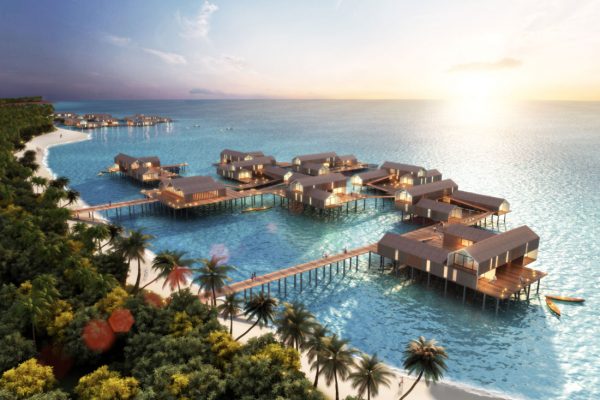
Kelong Co-Op. Proposed site: Serangoon Island (Coney Island).
Cluster living on a floating village.
Derived from the kelong (vernacular fisherman’s stilt house on water) typology, this typology for cluster living enables seniors to live with nature in a way that’s reminiscent of village life of yesteryear. A basic modular living unit is repeated and arranged around public spaces.
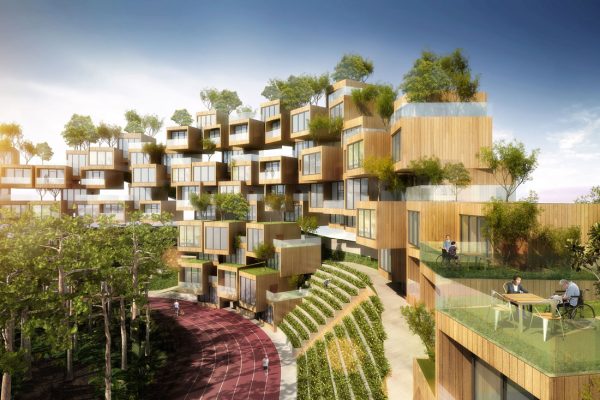
Healing Stadium. Proposed site: Jurong Stadium.
A sanctuary to restore body and mind.
The adaptive reuse of a stadium introduces apartments for seniors into an environment where there is plenty of safe green spaces for exercise and onsite care services (if needed). Some of the concrete seating can be repurposed for terrace farming, and a cat and dog shelter at the base could offer pet therapy to the elderly residents.

Garden of Life. Proposed site: Tanjong Rhu Promenade.
Public park with an inpatient hospice to celebrate lives well lived.
This typology proposes the co-location of a nature park, a tree nursery and an inpatient hospice care facility (where family members can also stay). It’s both a tranquil place for the terminally ill to live out their last days, and a public space that invites people to celebrate life. The nursery park doubles as an ash garden.
These 10 proposed typologies are published in a book titled Second Beginnings – Senior Living Redefined, which is available to download for free.
The Lien Foundation and COLOURS welcomes private and public institutions that are interested in developing the typologies further.
INDESIGN is on instagram
Follow @indesignlive
A searchable and comprehensive guide for specifying leading products and their suppliers
Keep up to date with the latest and greatest from our industry BFF's!

For Aidan Mawhinney, the secret ingredient to Living Edge’s success “comes down to people, product and place.” As the brand celebrates a significant 25-year milestone, it’s that commitment to authentic, sustainable design – and the people behind it all – that continues to anchor its legacy.
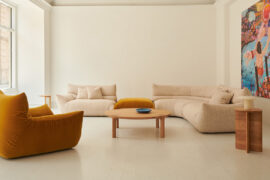
A curated exhibition in Frederiksstaden captures the spirit of Australian design

London-based design duo Raw Edges have joined forces with Established & Sons and Tongue & Groove to introduce Wall to Wall – a hand-stained, “living collection” that transforms parquet flooring into a canvas of colour, pattern, and possibility.

Consisting of four CPD accredited discussions, the inaugural INDE.Summit is to be held on 5 August 2021 and will cast a discerning light over the notion of civil ‘development’.

With an ultra-fine profile, this brand-new surface range appears visibly thinner, making it ideal for use in a range of indoor and outdoor projects.
The internet never sleeps! Here's the stuff you might have missed
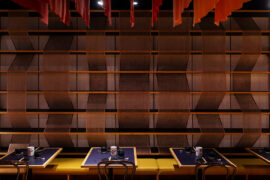
Designed by Kelly Ross, the newest addition to Bisa Hospitality’s portfolio represents more than just another restaurant opening.
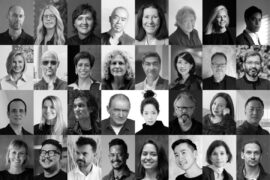
With the 2025 INDE.Awards now over, it’s time to take a breath before it all begins again in early December. However, integral to the awards this year and every year is the jury – and what an amazing group came together in 2025.
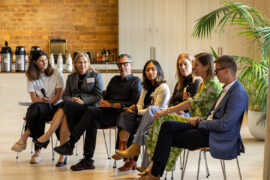
In this comment piece by Dr Matthias Irger – Head of Sustainability at COX Architecture – he argues for an approach to design that prioritises retrofitting, renovation and reuse.
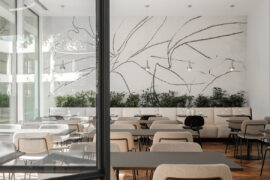
Hospitality is evolving fast, demanding interiors that can flex as quickly as guest expectations. From modular seating to stackable silhouettes, Bowermans brings global design brands and local know-how to help designers shape spaces that perform as well as they inspire.